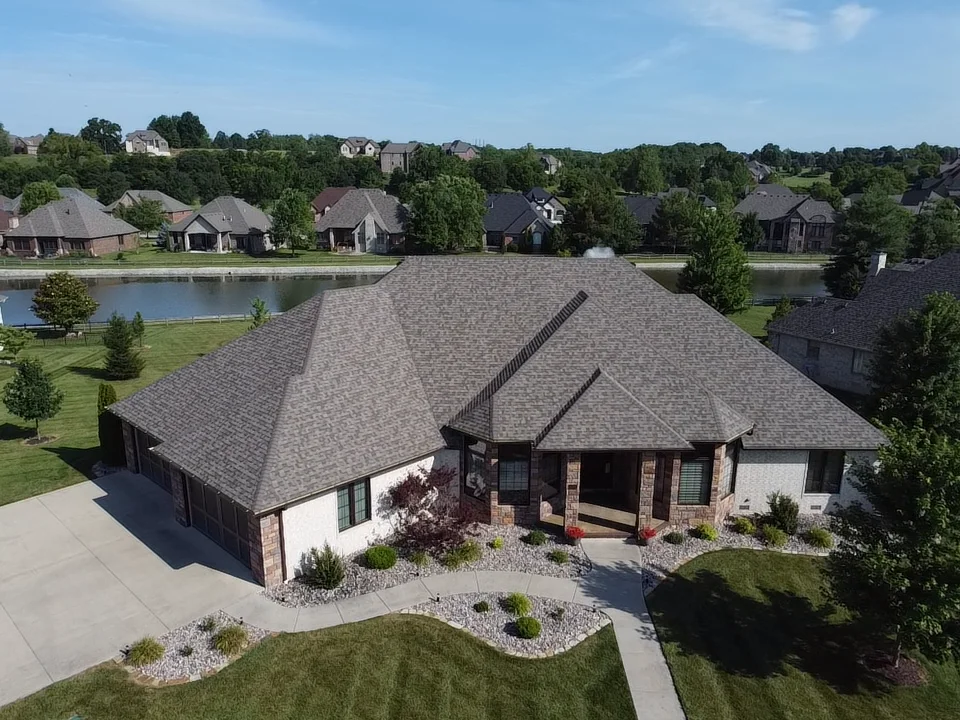Your roof serves as the first line of defense against nature, facing storms, scorching sun rays, and inclement weather conditions throughout its lifetime.
Wind can rip off shingles and damage structural frames. Heavy rains cause moisture damage due to uncontrolled water accumulation; especially if gutters become blocked and prevent proper drainage.
Snow
Snowfall poses a formidable threat to roofs. It adds unnecessary weight, stressing areas that were previously physically resilient. Under such pressure, things that weren’t meant to bear this much weight will eventually collapse under pressure and break apart completely.
Furthermore, snowfall can create leaks in your home. As it melts during the day, water seeps into cracks that weren’t covered up by snowpack and gradually leaks in to your living space.
At nighttime temperatures, when water freezes back into its frozen state and expands further. This cycle repeats itself again and again, gradually degrading your roof material and breaking it down over time. If you live in an area prone to heavy winter storms, upgrading to more durable roofing material could save money in repairs; especially essential if your older home has endured regular snowfall.
Rain
Raindrops tumbling gently upon your roof can be soothing and relaxing, yet heavy rainstorms can also be detrimental. Heavy downpours can put strain on roof structures by exploiting any tiny cracks and flaws within them and lead to leakage that causes further problems inside of your home.
Rain can wreak havoc with roof penetrations such as chimneys, skylights and vents – leaks in these areas can be particularly difficult to detect and can often require professional repair work to make safe.
Heavy rain can erode the protective coating on roofing shingles, leading to increased aging and deterioration. Furthermore, persistent rainfall encourages mold growth that damages materials used in roof construction as well as impacting indoor air quality and health.
Wind
Most people understand the risk of wind damage to their roof but underestimate just how powerful a powerful wind storm can be. Hurricanes and tornadoes produce windstorms with powerful gusts which can uproot shingles, loosen fasteners, tear off sections of roof, or uphold entire sections in one fell swoop.
High winds can rip shingle edges and corners from their bases, leaving gaps where moisture can infiltrate your home and damage is quickly compounded if left unchecked. Although such damage starts out small, if left untreated it could quickly expand to become an expensive problem for homeowners.
Lower speed winds such as those encountered during thunderstorms and derechos (long, straight line windstorms) can still damage a roof, particularly around its corners and edges. Corner and edge areas tend to be most affected, although quality installation, geometry of roof design and use of flashing and nail placement all play an integral part in how resistant to wind a roof is. Regular inspections and maintenance checks in windy regions will help safeguard its protection.
Sun
Sunlight can cause roofing materials to degrade on a molecular level, eventually leading to cracks and brittleness that significantly diminish its effectiveness. The problem becomes particularly acute in states with hot summer temperatures; additionally, intense heat may pose additional issues for some plastic or metal components of flashings that contribute to roof degradation.
The hot summer sun can damage roofs in ways beyond direct sunlight, leading to leakage and other structural problems. Heavy rainfall can quickly exploit any small cracks or flaws in your roof’s construction to cause extensive water damage and rot in other parts of your home.
As a homeowner, you should always monitor for signs that your roof needs repair. Address any visible problems immediately to minimize weather-related damages to your home or business and work with an established residential roofing company to make sure it remains in tiptop shape – contact them now to set up an inspection!




